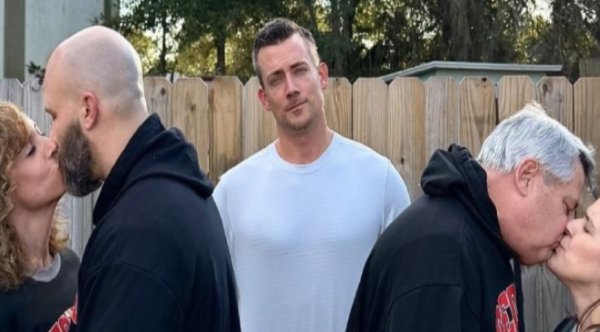What The Umbilical Cord Looks Like Under A Microscope, And How It Works
October 29, 2024
Have you ever wondered how the umbilical cord actually works? Seeing it under a microscope reveals just how intricate and essential it is—each tiny structure playing a role in nourishing and protecting the baby.
What’s particularly amazing is how perfectly designed the umbilical cord is to support life. The vein carries nutrient-rich blood to the baby, while the two arteries transport waste back to the placenta for removal.
This quick video dives into the microscopic structure of the cord, a true marvel of biological engineering!
@dr.bioforever The umbilical cord is not directly connected to the mom but rather it is connected to the placenta, which in turn is connected to the mom (to the uterine wall). . The thing that I always found fascinating is that the mother’s and fetus’ blood vessels do not technically touch. Instead, the vessels from each come very close at the level of the placenta but they remain separated by a thin placental membrane. This membrane allows for the exchange of materials between the mom and the fetus while keeping the two blood circulations separated. . The mom sends the nutrients and the O2 that the fetus needs by transferring them from her blood to the blood vessels within the placenta, which are part of the fetal circulation. From there, these nutrients and O2 travel through the umbilical vein within the umbilical cord, directly to the fetus. . At the same time, the fetus sends carbon dioxide and metabolic wastes from its circulation back to the placenta via the umbilical arteries. These wastes are transferred across the placental membrane into the mother’s blood for elimination. . A few other interesting details about the umbilical cord: The cord’s epithelium is produced by the amnion (one of the membranes surrounding the fetus). Early in the development of the fetus, the allantois can be seen in the umbilical cord (the allantois plays an important role in the development of the fetal urinary system and in the formation of blood vessels within the cord). The Wharton’s jelly within the umbilical cord (flexible tissue within the umbilical cord that surrounds the cord’s blood vessels) contains mesenchymal stem cells. The umbilical cord blood also contains a lot of hematopoietic stem cells. These types of stem cells are very important for research for medical uses. . Isn’t the umbilical cord an amazing structure!? . For this video, I used a Leica ZOOM 200 stereoscope and an Olympus BX41 microscope at up to 400X magnification. #microscopy #microscope #physiology #umbilicalcord #histology #drbioforever ♬ perfect love - Ophelia Wilde
 His Last Day As A Teacher After 36 Years. They Turned It Into A Memory For Life
His Last Day As A Teacher After 36 Years. They Turned It Into A Memory For Life
 A Couple Invited A Homeless Man In On Christmas — And He Never Left
A Couple Invited A Homeless Man In On Christmas — And He Never Left
 Man Marks 11th Straight Christmas As The Last Unmarried Member Of His Family
Man Marks 11th Straight Christmas As The Last Unmarried Member Of His Family
 Teacher’s Simple Strategy Is Changing The Lives Of So-Called ‘Troublemaker’ Students
Teacher’s Simple Strategy Is Changing The Lives Of So-Called ‘Troublemaker’ Students
 Three Brothers Cleaning Out Mom’s Attic Found A Comic Worth $9 Million
Three Brothers Cleaning Out Mom’s Attic Found A Comic Worth $9 Million
 'I Laughed And Cried': Vet’s Hilarious Condolence Card Brings Laughter To Grieving Cat Owner
'I Laughed And Cried': Vet’s Hilarious Condolence Card Brings Laughter To Grieving Cat Owner
 His Last Day As A Teacher After 36 Years. They Turned It Into A Memory For Life
His Last Day As A Teacher After 36 Years. They Turned It Into A Memory For Life
 104-Year-Old WWII Veteran Brings The House Down With National Anthem On Saxophone
104-Year-Old WWII Veteran Brings The House Down With National Anthem On Saxophone
 First Responders Use Olive Oil To Rescue Squirrel Trapped In Dumpster
First Responders Use Olive Oil To Rescue Squirrel Trapped In Dumpster
 Watch The Moment This Dog Is Rescued From Dog Fighting
Watch The Moment This Dog Is Rescued From Dog Fighting
 Nanny Gets Surprised With A New Car. Her Reaction Is Incredible
Nanny Gets Surprised With A New Car. Her Reaction Is Incredible
